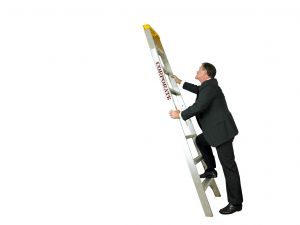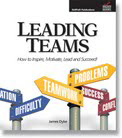This is one of my favorite “Great Ideas You Can Use RIGHT NOW to Become a More Effective Leader.” It comes from authors Chip and Dan Heath, who presented the principle in a column in FastCompany magazine a while ago. NOTE: This concept has particular application to those unpleasant, dreaded, or overwhelming tasks and goals that we all face at some point in our lives and careers. Chip and Dan explain:
“We’re all used to hearing about stretch goals, and when you feel empowered, stretch goals are useful ambition teasers. But when you feel overwhelmed, stretch goals are a recipe for paralysis.”
In difficult times, Chip and Dan recommend the use of “whisker” goals – smaller, more modest steps that help us get past the “startup costs” – the apprehension and fear – that keep us from tackling the tough, unpleasant work we hate. Their word of encouragement is simple:
Change can start with small measures, and it can be rewarded with small prizes.
In their column, they give the example of the 5-minute Room Rescue, an idea proposed by the FlyLady, a “home executive” turned organization guru. Here’s how it works: When you are faced with the unpleasant and overwhelming task of cleaning your house, you set a kitchen timer to five minutes. Then you run to the dirtiest room – the one you’d dread others seeing – and, as the timer ticks, you start making whatever progress you can. When the timer goes off, you can stop cleaning without feeling any guilt about it. Simple.
Chip and Dan tell us why this works:
“The trick, of course, is that the dread is always worse than the thing that’s dreaded. So once you start cleaning house, you probably won’t stop at five minutes, especially when you see progress.”
I have explained the link between behavior and emotions many times before in my own training seminars. Most of us agree that our emotions affect our behavior. But few understand that it is a two-way street: Our behavior also can affect our emotional state… our mood! You have experienced this yourself I am quite sure.
Think of a time you have rolled up your sleeves and tackled a difficult, unpleasant task. Even if you were not “in the mood” at the outset, after a few minutes of making progress, you (surprisingly) found yourself “in the groove” – (a) feeling good about accomplishing something; and (b) motivated to continue until finished!
So… set the timer and let the games begin! (Seriously… use a timer… it’s fun and it works.)
- Set aside a small measured portion of time (5 to 15 minutes).
- Challenge your team to tackle the hated tasks.
- Give small, simple prizes to team members who make some progress!
Another helpful “brain hack” I discovered is the motivational power of measurable progress. It seems that we humans are more motivated by seeing how far we have come versus how far we have yet to go. This is the basis for the motivational impact of that old hat device we call the “thermometer graph.” I wrote about this in a previous post. You can access it here:
Up Close and Personal
As an Eagle Scout, I had the opportunity to backpack a major portion of the John Muir trail in the High Sierras of California. Some of that hiking required a substantial increase in elevation over a long and tortuous series of “switchback” trails that crisscrossed the face of the mountain, allowing for a gradual (but exceedingly long) ascent. The result is a long and painfully slow climb that challenges the patience and endurance of the hiker, especially when they are encumbered with a fully-loaded backpack. Trying to measure the length of trail required to reach the peak is impossible. But…the occasional pause to view the trail already covered quickly tells the tale of progress, and gives the weary hiker a sense of accomplishment that is motivating enough to encourage the continued climb.
So What????
Leaders can easily tap into these cognitive principles by breaking down major, longer-term goals into smaller, incremental “bits” that can be measured (and rewarded!) over shorter (and more frequent) time spans. That simple approach can be used to markedly increase team motivation and morale. And yes, marking progress with a visual “marker” of some kind may sound “corny,” but it works—it engages interest and supports continued performance!
In the next issue, I will explain the neuroscience behind this simple approach. Stay tuned!
And if you are interested in more ideas that can help YOUR team succeed, then give us a call – we can help! We can give you and your team exactly what is needed to perform, produce, and succeed. We can bring fresh ideas and practical tools to your organization through a one or two-day training event; a half-day event; or even a two-hour “lunch and learn” if your time and resources are limited. Call us today!
In the meantime, stay tuned to this newsletter—we have more great ideas planned for future issues!
Until next time… Yours for better leaders and better organizations,
Dr. Jim Dyke – “The Boss Doctor” ™ helping you to BE a better boss and to HAVE a better boss!





